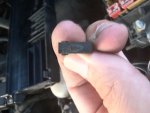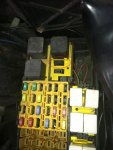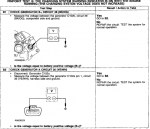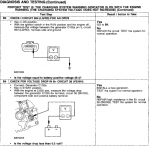camper4lyfe
Active Member
- Joined
- Jun 3, 2008
- Messages
- 44
- Age
- 45
- Vehicle Year
- 2003
- Transmission
- Automatic
Here's a strange one for you, folks.
I've been on vacation for the past 2 weeks, so my truck's been sitting for somewhere between 2.5 and 3 weeks (the wife and I commute together in her car for the gas mileage).
I went to run out to grab some grub tonight in the truck (03 FX4), and when I started it, it did a couple strange things. It seemed to rev really high right off the bat, but came down and ran normal. Also, the battery light came on, and the voltmeter/gauge is reading REALLY low.
I've got a Haynes manual, and I went through some of the tests as best I could (it's really confusing) and it's leading me to believe that the alternator's bad. The battery reads 12.4V when it's not running, but something like 11.9 while running, no matter what rpm it's at. I've noticed recently that the voltage fluctuates while driving based on RPM and engine load (idling with the AC on drops the voltage quite significantly).
Am I reading this right that the alternator's bad? In the end, I guess it doesn't matter if it's the alternator or the regulator because it's an all in one unit.
So I guess I have 4 questions:
1) Am I figuring it right that the alternator's bad? (I plan to have it load tested first)
2) Should I replace the battery as well? (Should I just have it load tested too?)
3) Would the alternator go bad just from sitting?
4) What's the amperage of the stock alternator/does it matter if I run a bigger one than stock? (I'm seeing 90A and 95A listed to fit)
I've been on vacation for the past 2 weeks, so my truck's been sitting for somewhere between 2.5 and 3 weeks (the wife and I commute together in her car for the gas mileage).
I went to run out to grab some grub tonight in the truck (03 FX4), and when I started it, it did a couple strange things. It seemed to rev really high right off the bat, but came down and ran normal. Also, the battery light came on, and the voltmeter/gauge is reading REALLY low.
I've got a Haynes manual, and I went through some of the tests as best I could (it's really confusing) and it's leading me to believe that the alternator's bad. The battery reads 12.4V when it's not running, but something like 11.9 while running, no matter what rpm it's at. I've noticed recently that the voltage fluctuates while driving based on RPM and engine load (idling with the AC on drops the voltage quite significantly).
Am I reading this right that the alternator's bad? In the end, I guess it doesn't matter if it's the alternator or the regulator because it's an all in one unit.
So I guess I have 4 questions:
1) Am I figuring it right that the alternator's bad? (I plan to have it load tested first)
2) Should I replace the battery as well? (Should I just have it load tested too?)
3) Would the alternator go bad just from sitting?
4) What's the amperage of the stock alternator/does it matter if I run a bigger one than stock? (I'm seeing 90A and 95A listed to fit)
















